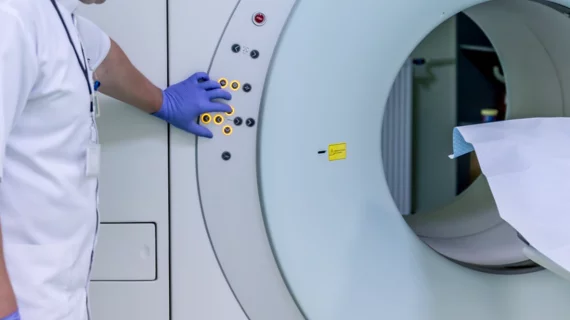No matter how much safety planning and training occur in a radiology department, accidents can still happen in the MRI suite—and they are often dramatic and unpredictable. An article published online Aug. 24 in the Journal of the American College of Radiology details the experience of a team from the University in Seattle in implementing training and risk management procedures.
“It is essential for organizations to maintain cogent and comprehensive MR safety policies, training, practices and injury documentation,” wrote Nathan M. Cross, MD, MS, and colleagues. “At our institution, MR policies adhere to the recommendations described here… and are reviewed every two years and updated as needed.”
Safety in an MRI environment requires both proactive and reactive safety measures to mitigate and eliminate risks. Proper risk management involves the follow:
1. Screening: All patients and associated personnel should be screened to keep potentially dangerous objects out of the MRI suite.
2. Staffing: Ideally, every facility should have three designated roles:
- Medical director—typically a physician who ensures safety guidelines are created and implemented.
- Safety officer—typically an MRI operating technologist in charge of operations and monitoring
- Safety expert—typically a scientist or engineer who is trained in MRI fundamentals.
3. Segmentation: The MRI environment should be controlled to permit access only to authorized individuals. The four-zone approach to segmentation designates the scan room as zone IV, rooms adjacent to the scan room as zone III, areas further from the scan room as zone II and common areas in the hospital as zone I.
4. Identification of high-risk patients: Some individuals, such as expectant mothers or renally compromised patients, may require a consent process before undergoing MRI.
5. Training: All personnel must receive minimal levels of training, depending on what zones they regularly enter.
“At our institution, basic MR training is an online safety video provided initially and annually to level 1 and level 2 MR personnel, with the latter requiring additional advanced training. Some non-MR personnel, such as anesthesiologists, also complete the annual training,” Cross et al. wrote. “We are in the process of making this training mandatory for all radiologists who visit or interact with MRI. Custodians are permitted in zone III only when level 1– or level 2–trained MR personnel are present.”
The authors add that regulations and guidelines are continually being updated, so all personnel must remain dedicated to continuing education and training to ensure the safety of patients and care providers.
More recent Radiology Business coverage about MRI safety is available here.

